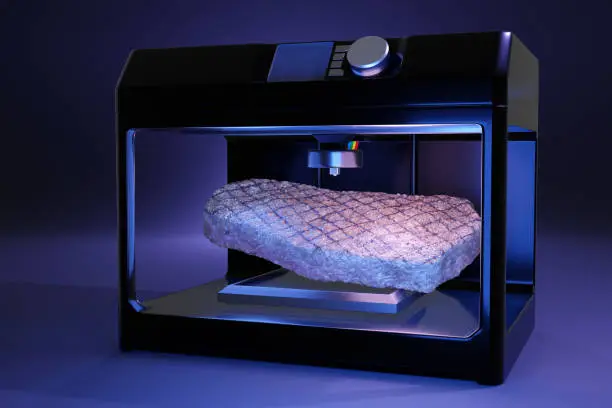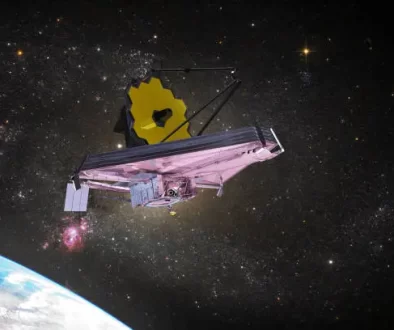Biomerging Horizons: Navigating the Symbiosis of Biology and Technology
The Dawn of Biotechnology
When humans begin merging biology with technology, they possess the ability to alter life itself. We’ve seen organ Farms, with governments utilizing artificial wombs to rebuild populations and robots incorporating biological Parts. Genetically modified humans who can heal through touch and more are on the horizon. This marks the realm of Biotechnology. But what transpires within our environment as humans commence engineering life, potentially becoming an invasive species? What unfolds behind closed doors in biohackers’ labs, shielded from regulations? If human bodies are bioengineered, might we evolve into a distinct Life species, veering away from our human roots and appearing more alien? Humanity’s role shifts from being mere observers of nature to becoming its masters.
The Era of Bioprinting
Bioprinting entails 3D or even 4D printing, utilizing living cells termed bio inks instead of plastic or metal. These cells get printed layer by layer and can grow and connect, forming biological structures. With bioprinting, the aim is not merely to fabricate objects but to infuse them with life. Bioprinting embodies an alchemist’s dream realized.

Applications and Advancements in Bioprinting
Basic applications include bioprinted eyeball corneas, bioprinted hair follicles to address hair loss, personalized cosmetic testing, combat wound healing, and venturing further into the future. Advanced bioprinting aims to create 3D printed coral reefs offering habitats for marine life, aiding in the restoration of damaged ecosystems, or designing small-scale robotic space stations functioning as bioprinting factories, leveraging the efficiency of liquid printing in a microgravity setting.
Bioprinting and the Human Body
Concerning the human body, bioprinted organs are produced in organ Farms to surmount the challenges of organ shortages, or a patient’s own cells are employed to craft miniaturized organs or organoids for pre-administration medical testing. Bioprinted prosthetic limbs are meticulously designed to seamlessly integrate with the individual, employing living tissue to enhance integration with the host’s body. The realm of cybernetics witnesses experiments where electronics are implanted into bioprinted components, resulting in cybernetic organs surpassing the capabilities of natural ones.
Ethical and Social Implications
Examples include bio-printed lungs embedded with sensors and Nano filters for air toxin removal or replacement bionic eyeballs featuring built-in Zoom or infrared vision. Recipients of these experimental bionic eyeballs begin reporting extraordinary visions. Following an accident-induced loss of vision, a former archaeologist undergoes a bionic cornea transplant, subsequently experiencing restored vision and purported visions and hallucinations, convinced of uncovering hidden historical secrets.
Living Architecture and Bio-Art
Returning to fundamental biotechnology, living architecture emerges where structures are constructed with bioengineered materials capable of self-repair, air purification, pollutant absorption, and even reproduction. These structures utilize gecko-inspired adhesives and coral reef-inspired Eco concrete in their construction. Some incorporate biological batteries, employing components like bacteria to store and generate energy. Yet, criticisms arise regarding planned obsolescence, where companies manipulate their biomaterials to degrade after a set period, compelling repeated purchases.
Bio-Inspired Innovations in Living Spaces
Within these bio buildings, luxury apartments boast walls adorned with Bio art. Artists utilize living tissue and bioprinters to fabricate dynamic, evolving works of art. Coastal city bio apartments utilize genetically engineered corals and muscles to create living sea walls, shielding against rising sea levels and storm surges. Additionally, bioluminescent lights made from engineered plants, bacteria, and algae illuminate streets, replacing conventional electric street lights.
The Unforeseen Challenges of Bioluminescent Technology
However, in a small town relying on bioluminescent lamps, an abrupt decay in the bioluminescent organisms plunges the town into darkness. Botanists and engineers collaborate to identify the cause and restore light to the town. Conspiracies spread suggesting biohacking of the lights to release harmful pollutants. Elsewhere, a robotics firm develops a robot featuring bioluminescent skin, sparking discussions on the potential application of this technology to human skin.
Biohacking and the Underground World
In the underground realm, biohackers are already at the forefront, experimenting on their own bodies. Cyberpunks and biohackers operate clandestinely, evading government regulations. They experiment with implanting microchips into their arms and utilizing digital inks for tattoos displaying their online wear.
Unconventional Practices and Speculative Technologies
They construct biocomputers from biomaterials and living neural tissue. Cyberpunks manipulate and fine-tune brain chips, disabling safety features for more extreme, unauthorized neural experiences, employing their DNA as data storage devices, akin to nature’s ability to store vast amounts of data. Mimicking nature’s processes, these biohackers store and share substantial data amounts.
The World of Biohackers and Genetic Experimentation
Beneath the city streets, a black market for new-age substances thrives. Biohackers engineer grapes fermenting into wine within minutes and devise unregulated, pest-resistant, disease-free, allergy-free food. Excitement surrounds self-replenishing food containers made of living organisms that constantly regenerate their contents, offering an endless supply of micro Foods. Some biohackers even experiment with freezing one another, aspiring to revive bodies. They earn the moniker “cryonic punks.”
The Ethical Dilemmas and Future of Bionic Augmentation
They raise genetically edited pets emitting bioluminescence, causing them to glow in the dark. Rumors circulate about chimeras—creatures blending genes from diverse species. The term “Chimera” harkens back to Greek mythology, referencing a creature with the body of a lion, a goat-like head rising from its back, and a snake tail. In the corporeal world, corporations render older bionic prosthetic models obsolete, compelling users to upgrade, sparking debates on ownership: do people or corporations possess the rights to these limbs?
Evolving Humanity: The Symbiosis of Biology and Technology
Bioprinted prosthetic limbs achieve full integration with the body’s nervous system, granting a sense of touch and more natural control. Some individuals voluntarily undergo amputations for military enhancement, and governments employ bionic limbs to craft super soldiers. A young boy, previously paralyzed in an accident, regains mobility through a bio exoskeleton. Each bionic prosthetic and bio-exoskeleton comes with a registration tracking number.
Shaping Future Generations: Artificial Womb Technology
In government-controlled laboratories, scientists explore advanced artificial womb technology, encompassing pod devices enhancing external pregnancy and gestation, termed ectogenesis. In a world grappling with infertility, artificial wombs offer hope. Affluent individuals outsource childbirth to extensive womb Farms, while governments, confronting a population decline, establish their own Farms.
Controversies and Ambitions
Conspiracies circulate concerning a dictator’s obsession with legacy, using artificial wombs to generate numerous offspring, aiming for eternal rule and immortal dictator status. Artificial womb technology finds applications in space colonization, military endeavors, and the revival of endangered species. Extended gestation experiments involve leaving a body in the artificial womb for an extended period, enhancing natural cognitive and physical capabilities. The next trillion-dollar industry centers on BIO hybrid robots, constructed with biological tissue, offering heightened flexibility and energy efficiency.
Unleashing Biohybrid Robots: Balancing Innovation and Responsibility
A corporation pioneers biomimetic robots capable of blending into nature and interacting with animals. The corporation contends that these biorobots serve environmental monitoring or biological research purposes. Yet, concerns loom regarding their unintentional role as an invasive species, disrupting ecosystems and potentially leading to the extinction of native fauna. Simultaneously, apprehensions emerge regarding the potential misuse of biohybrid robots for espionage and spying, posing as birds or drones to infiltrate and compromise sovereignty.
So, I hope this article has been informative for you, and I’d like to thank you for viewing.



